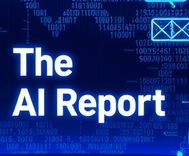Artificial intelligence may have invented two new antibiotics

The AI Report
Daily AI, ML, LLM and agents news
AI vs. Superbugs: A New Dawn in Medicine
The relentless rise of antibiotic-resistant superbugs poses one of the most significant threats to global health. Traditional methods of antibiotic discovery are slow and often fail to keep pace with the rapid evolution of these resilient pathogens. But what if we could enlist the power of artificial intelligence to turn the tide?
Recent groundbreaking research suggests that this future is already here. Artificial intelligence has successfully invented two new potential antibiotics, marking a monumental step forward in our battle against drug-resistant infections. This isn't just about tweaking existing compounds; these drugs were designed, atom by atom, by AI itself.
Targeting the Unconquerable: Gonorrhoea and Staph
The new AI-designed antibiotics have demonstrated remarkable efficacy in laboratory and animal testing. Specifically, they've proven capable of destroying two notoriously difficult-to-treat superbugs: gonorrhoea and staph infections. These are pathogens that have increasingly defied conventional treatments, leading to severe health complications and, in some cases, untreatable conditions.
The ability of AI to precisely engineer these compounds, tackling the very structure of the bacteria at an atomic level, represents a paradigm shift. It moves beyond the trial-and-error approach of traditional drug discovery, offering a targeted and efficient pathway to novel therapeutics.
Unlocking Unprecedented Potential
Medical professionals involved in this pioneering discovery are heralding it as truly groundbreaking. Professor Jim Collins from the Massachusetts Institute of Technology and Associate Professor Paul Griffin, Director of Infectious Diseases at Mater Health Services in Brisbane, are among those championing this breakthrough.
The implications stretch far beyond just antibiotics. The methodology employed by AI to design these potent drugs could someday be repurposed to combat other complex diseases, including cancer. Imagine AI sifting through countless molecular possibilities to design a drug that precisely targets cancer cells, minimizing harm to healthy tissue. This potential future, once confined to science fiction, is now a tangible prospect.
The AI Advantage: Speed and Precision
One of the most compelling benefits of using AI in drug discovery is the sheer speed and precision it offers. Developing a new drug traditionally takes years, if not decades, and costs billions of dollars. AI, with its capacity to process vast datasets and simulate molecular interactions, can significantly compress this timeline and reduce costs, accelerating the delivery of life-saving treatments.
This efficiency is crucial in the arms race against evolving pathogens. The quicker we can identify and develop new antimicrobial agents, the better our chances of staying ahead of resistance and safeguarding public health.
A Glimpse into the Future of Medicine
This achievement underscores the transformative power of artificial intelligence in scientific research and healthcare. It’s a testament to how intelligent systems can augment human ingenuity, leading to discoveries that might otherwise remain out of reach. As AI continues to evolve, its role in medicine will only expand, promising a future where incurable diseases become a thing of the past.
The development of these AI-invented antibiotics offers a beacon of hope in a world grappling with antibiotic resistance. It's a clear demonstration of how innovative technology can deliver immediate, tangible benefits and ignite a new era of medical breakthroughs, ultimately improving the lives of millions.

The AI Report
Author bio: Daily AI, ML, LLM and agents news
